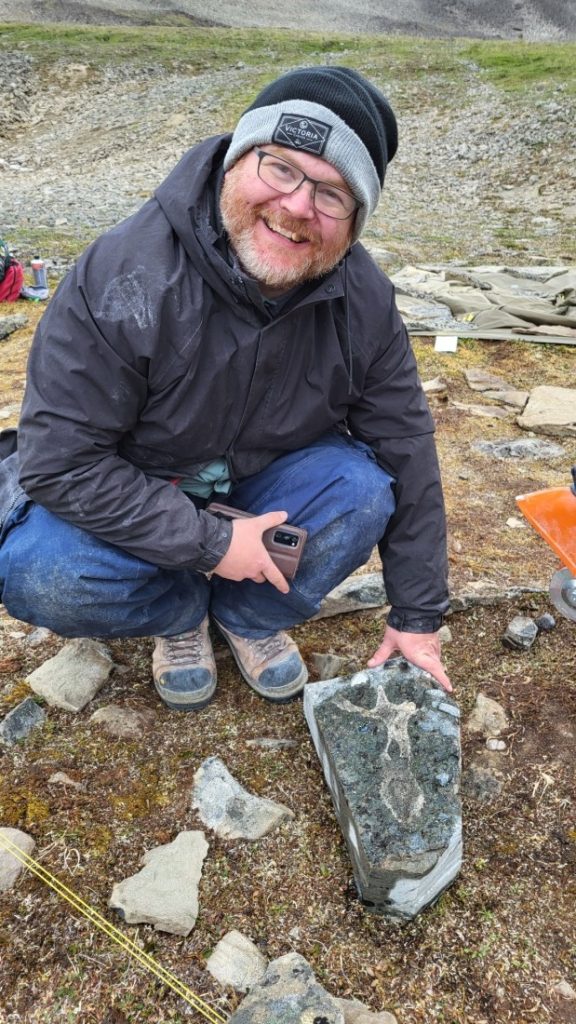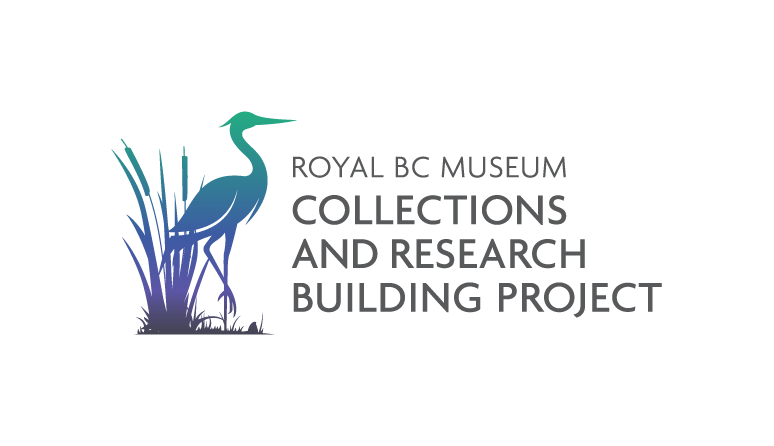Digging In to 500 Million Years of British Columbia History: Palaeontology at PARC Campus
By Dr. Victoria Arbour, Curator of Palaeontology
November 2025

When people think about fossils, they often think BIG—big dinosaurs, big mammoths and more. And big fossils need big spaces. The fossil collection at the Royal BC Museum has outgrown its current home and needs a bigger space—and that’s where PARC Campus comes in.

The fossil collection started out small, with about 120 small fossils purchased in 1893 from a fossil collector from Hornby Island. Palaeontology remained a relatively minor aspect of the provincial museum’s activities for decades, with only about 700 specimens in the collection by 1978, and without a major active palaeontology research program. Today, the collection numbers over 100 000, and it’s growing by leaps and bounds. Changes to legislation and policy in the province now make fossils on Crown land a protected resource, which means fossils collected in BC need to be permanently housed in a BC-based repository. That has drastically increased the number of fossils coming into the collection each year—a welcome development. As the provincial museum, the Royal BC Museum serves as the major repository for fossils collected during industrial activities like mining or roadworks, and by academic researchers studying the history of life in our province. We have also received several large donations—with specimens numbering in the tens of thousands—from individual fossil enthusiasts who wanted their finds preserved for research and education in perpetuity.
The fossil collection at the museum covers more than 500 million years of the history of British Columbia. It’s a record that stretches as far back as 1.6 billion years when we include some very special rocks called stromatolites from the mountains of southeastern BC, which were formed by cyanobacteria and other photosynthetic microorganisms. Highlights from the collection include the weird and wonderful animals of the Burgess Shale, strange fishes and marine reptiles from Triassic-aged rocks in northeastern BC, a huge collection of Cretaceous marine invertebrates from eastern Vancouver Island, thousands of delicately-preserved 52-million-year-old plants and insects from the McAbee Fossil Beds, 30-million-year-old whales from southwestern Vancouver Island, and the mammoths that called different parts of British Columbia home during the Ice Age. And, near and dear to my heart, a small but growing collection of dinosaurs from across British Columbia, based on fieldwork my team and I have conducted since my arrival at the museum in 2018. The palaeontology collection is also home to Buster the Ferrisaurus, the first example of a dinosaur species unique to BC. Researchers use the fossils in the collection to identify species new to science, learn about the weird and wonderful adaptations of extinct organisms, and understand how plants and animals evolve (or go extinct) when their environments change.


At our current downtown location, the palaeontology collection is challenged by a lack of growth spaces, especially for larger specimens. We don’t have suitable storage space and shelving to add many large fossils. We also don’t have a dedicated fossil preparation lab where we can clean up the fossils that are collected from the field so that they can be studied or put on display. When fossils are first collected, palaeontologists usually leave a lot of rock surrounding the fossil. This helps protect the fossil while it’s being transported from the field to the museum, but it also just reflects how difficult and time consuming it is to fully remove a fossil from its encasing rock, a process that can take hundreds or thousands of hours using specialized equipment.
At PARC Campus, the palaeontology program can finally get really big. We’re dramatically increasing space for our fossil collection, which is critically important for being able to preserve this irreplaceable and finite provincial resource. Most of the fossils in the collection are relatively small and fit in things like cabinets or shelves, but we will also finally have heavy-duty pallet racks that can safely store big, heavy fossils. Palaeontology will also have several dedicated lab spaces for us to safely extract fossils from their encasing rocks, and create replica moulds and casts for exhibits and sharing with other organizations. We’ll have improved capabilities for peering into the fossils and learning more about them through specialized cutting equipment and microscopes. Overall, we’ll be better situated to support not just our own research projects, but also the students and researchers who use the collection every year.
Best of all, the public will get a chance to see many of these exciting projects as they’re happening via the windows into our preparation lab. We have some really exciting specimens earmarked for this kind of work as soon as we are up and running in our new space—dinosaur bones my team and I have collected from the alpine plateaus in the north, a fossil turtle shell that collections manager and researcher Derek Larson helped collect from the Trent River, a long-necked marine reptile discovered during construction of the W.A.C. Bennett Dam, and countless beautiful coil-shelled ammonites from across Vancouver Island donated to us by many enthusiastic members of the public.
The palaeontology team is so excited to make the move to PARC Campus and really dig into this special (and growing) collection. We have so many wonderful, interesting and beautiful fossils to share when we open to the public. I hope you’ll pay us a visit!
